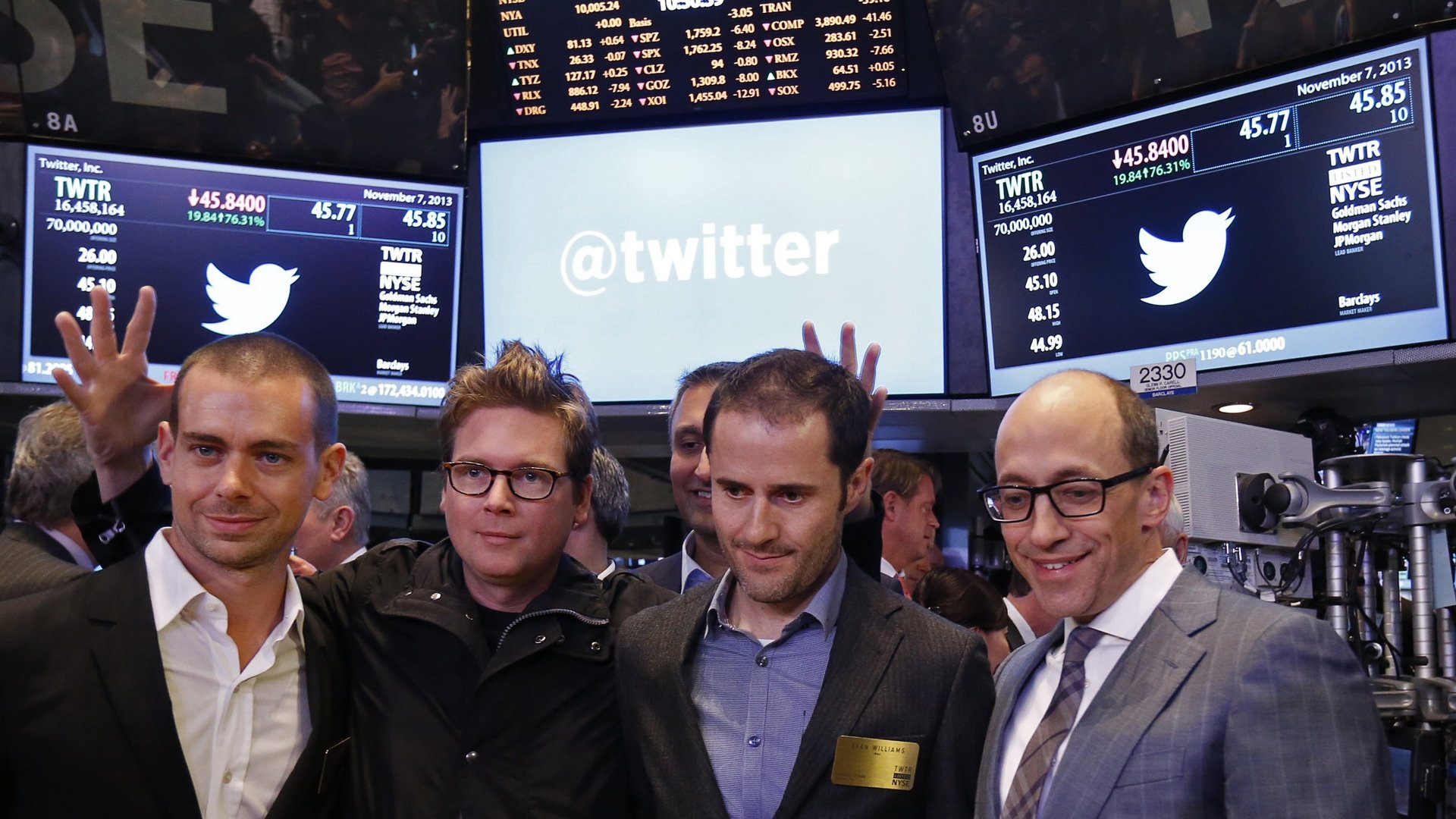Twitter is showing Snap what its future will be if it doesn’t answer some glaring business-model questions
In the next few weeks, Snapchat parent company Snap will start trading on the New York Stock Exchange and there are… concerns. Snap’s operations are expensive, it’s losing heaps of money, and competitors like Instagram are launching rival services as quickly as Snapchat can come up with them. In its IPO filing, Snap noted that it “may never achieve or maintain profitability.”


In the next few weeks, Snapchat parent company Snap will start trading on the New York Stock Exchange and there are… concerns. Snap’s operations are expensive, it’s losing heaps of money, and competitors like Instagram are launching rival services as quickly as Snapchat can come up with them. In its IPO filing, Snap noted that it “may never achieve or maintain profitability.”
One week after that filing, Twitter on Thursday announced fourth-quarter earnings for 2016. Twitter has been losing around $100 million a quarter for the past three years, and its user growth has been essentially flat.
Snapchat’s IPO filings showed that its own growth has already started to taper off, and that it lost over $500 million in 2016. That leaves potential investors with a big question about what sort of trajectory Snap is setting out on: Will it be the next Facebook, a humble startup turned massive, revenue-generating cash cow? Or will it be the next Twitter, a company that can’t seem to grow or make money?
Snap’s shareholders won’t actually have any say in how the company is run, but there is one potential upside for co-founders Evan Spiegel and Robert Murphy: Twitter is a valuable blueprint for exactly how not to run a public social software company.
Twitter is nothing if not relevant—the president of the United States uses it as his personal bully pulpit—and yet the company has not figured out how to successfully monetize what has quickly become one of the most important tools in US diplomacy… or lack thereof.
Twitter has also realized, as Facebook has, that there’s a lot more money to be made in video advertising than text. But unlike Facebook, Twitter is still struggling to generate any noticeable revenue off of its live video partnerships, or its richer-content products like Moments. Snapchat, on the other hand, is at this point almost entirely a video-sharing and -watching service. Earlier this week, it announced a push into original content that includes bringing a version of BBC’s much-loved nature series, Planet Earth, to the social network.
In its IPO filings, Snap also revealed what might be one of its biggest potential strengths: Snapchat’s stickiness. Snapchat users generate over 2.5 billion snaps a day, and the average user visits the app more than 18 times each day, spending between 25 and 30 minutes with it daily. Because Snapchat, and especially Stories—the videos users post publicly—is constructed more like television than like a Twitter or Facebook feed, that kind of time spent in the app means a lot of opportunity for surfacing ads. If Snap can figure out how to grow advertising, and make its advertising products more valuable to its buyers without alienating users, it might be able to find a heathy revenue stream. But that’s a big if.
In Twitter, Snap can also see what happens if it focuses too heavily on advertising. Facebook and Google control the vast majority of the digital advertising market, and Twitter has hard a hard time penetrating that dominance. That’s a problem, since 90% of its revenue this past quarter came from advertising, and compared with Facebook’s robust ad offerings, Twitter’s promoted content tends to get lost in a constant stream of information. Attempts to innovative in this space—Twitter briefly flirted with a ”buy button” as a way of purchasing products directly through the platform—have fallen flat.
Snap could face similar problems. It currently has Spectacles, a toe-dip into the hardware waters, but in its filings Snap said that revenue from the video-recording sunglasses was ”not material” (meaning they didn’t sell particularly well), and acknowledged that it has relatively little experience in hardware.
In its own IPO filing in 2013, Twitter issued an almost identical warning as Snap. “If we fail to educate potential users and potential advertisers about the value of our products and services, if the market for our platform does not develop as we expect or if we fail to address the needs of this market, our business will be harmed,” the company wrote. “We have incurred significant operating losses in the past, and we may not be able to achieve or subsequently maintain profitability.”
For Twitter, that’s proved true so far. Snap’s future investors will have to hope that Spiegel and Murphy can take heed from Twitter’s missteps, and figure out how to make a robust business out of a fun social network.